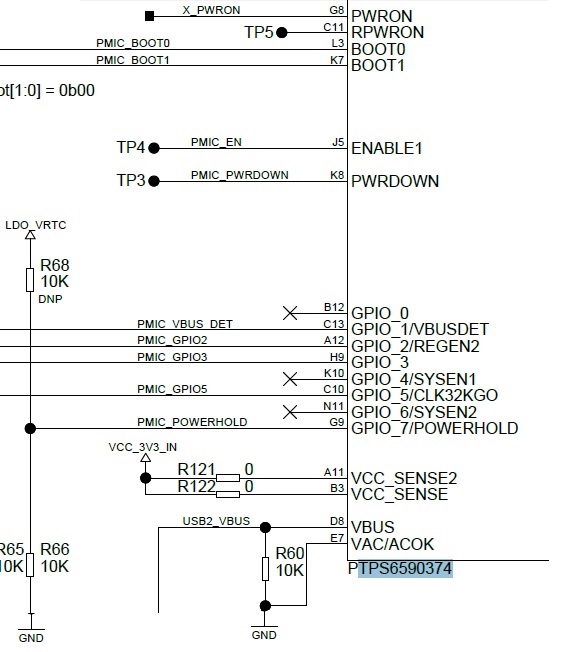Hi,
I'm using the PHYTEC's phyCORE-AM57x SOM, which uses the TPS6590374 as PMIC for the AM572x SOC.
The TPS6590374 has the connection of the x_PWRON pin connected to the switch and GPIO_7 connected to ground permanently making it powerON always from the switch.
I would like to remove the dependency of the switch for PWRON pin. So is it possible to do this with any register settings ?
Below is the part of circuit for reference:
Thanks & Regards,
Nanjunda


